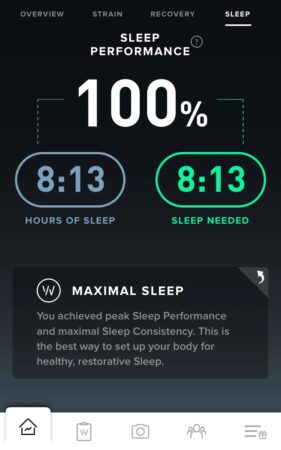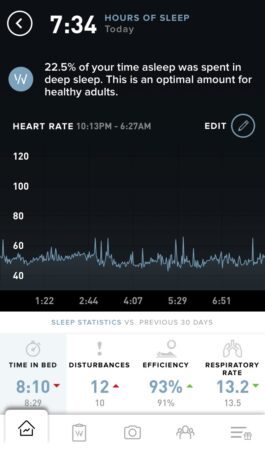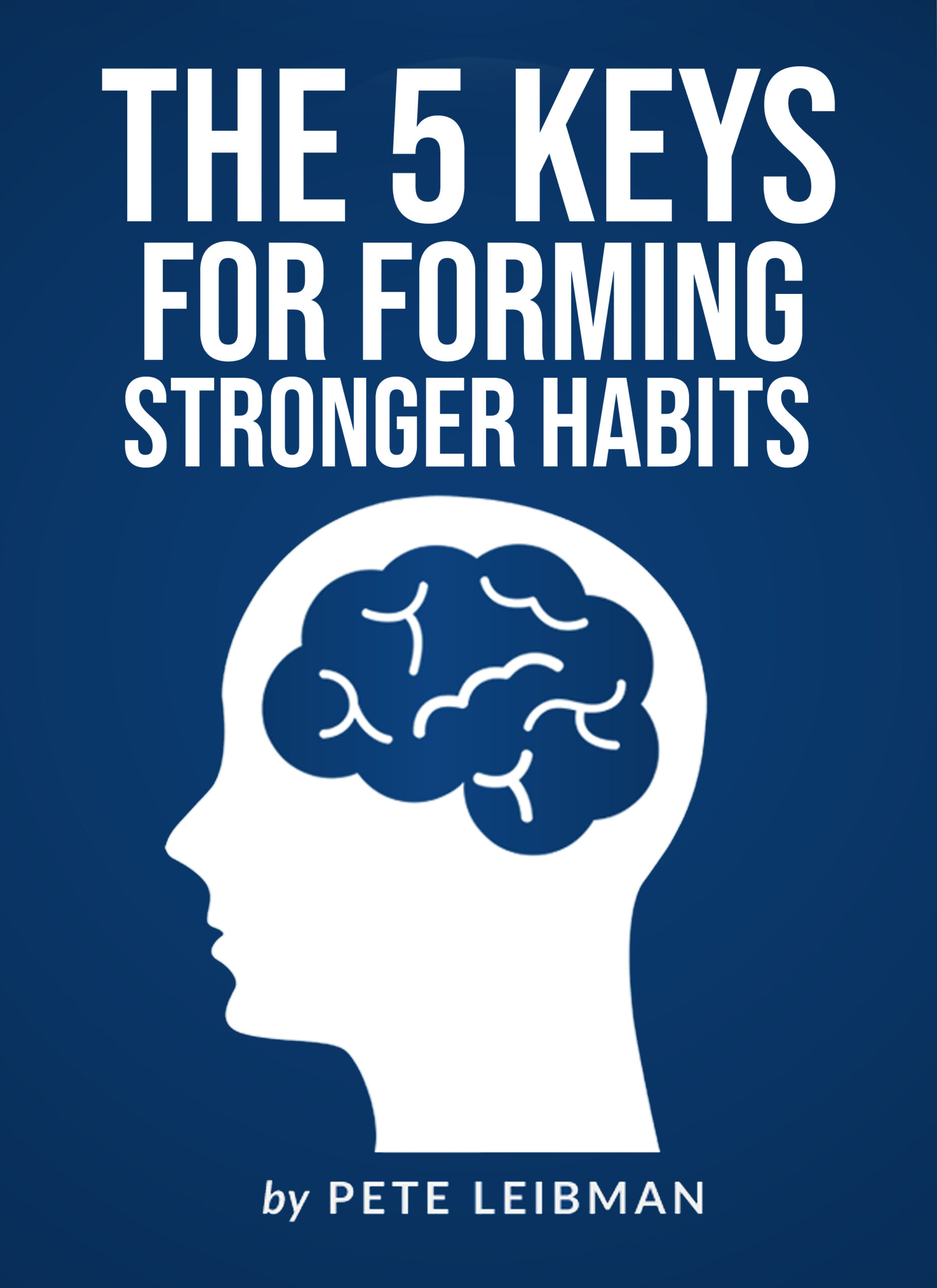
I have been monitoring and optimizing my sleeping habits for years. However, it wasn’t until I started tracking my sleep through WHOOP, a fitness wearable, that I really began to understand my sleep patterns and how much sleep I really needed to be at my best each day.
In this article, I’ll share two surprising lessons that I learned about sleep and performance by using WHOOP.
Become Your Strongest Self
Download my free 40-page eBook on“The 5 Keys for Forming Stronger Habits.”
You’ll also receive my free weekly newsletter.
1. “Time asleep” is often much lower than “time in bed.”
Each night, WHOOP measures your Sleep Efficiency, which is the percentage of your time in bed that you are actually asleep.
There are a variety of factors that impact your Sleep Efficiency, including your age and fitness level. Sleep Efficiency is typically higher when you are younger and fitter. After the age of 30, your Sleep Efficiency usually begins to decline by about one percentage point per decade. 1
According to data from one million nights by WHOOP members, the average Sleep Efficiency on WHOOP is 94.4%. This means that if a typical WHOOP user spends eight hours in bed, he or she will actually get about 7.5 hours of sleep. 2
Note: WHOOP members tend to be fitter and younger, so WHOOP’s Sleep Efficiency scores are likely much higher than the population as a whole.
According to the first few months of my WHOOP data, my average Sleep Efficiency was 91-93%. Since I usually fall asleep quickly and rarely wake up during the night, I would have assumed that my Sleep Efficiency was much closer to 100%. In reality, if I need eight hours of sleep to be at my best the next day, then I actually need to be in bed for about eight hours and 45 minutes that night.

Chances are that you also need to spend more time in bed than you realize. Most people are actually asleep for at least thirty to forty minutes less each night than they think they are. If you are over the age of thirty or not very fit, then your Sleep Efficiency is likely even lower, and you need to spend even more time in bed each night.
Note: Regardless of your age or fitness level, you can improve your Sleep Efficiency by optimizing your sleep environment and by improving your bedtime habits.
2. More Strain today requires more sleep tonight.
Within the first few weeks of using WHOOP, it was clear that I needed to make sleep an even bigger priority on certain nights. For example, one Wednesday, I did a very tough 90-minute trail run. My max heart rate hit 191 beats per minute, and my average heart rate for the entire workout was 149 beats per minute. My Strain for the day (one of WHOOP’s unique metrics) ended up being 18.8, which WHOOP classifies as “all out exertion” and “near maximal cardiovascular load.”

That night, I got less than seven hours of sleep, which was far from ideal after such a demanding day. I got up at 5:15 a.m. the next morning to lead and complete a 6:00 a.m. workout for a group of people in my town. Since this morning workout was also very difficult, my Strain for Thursday ended up being 17.5, which WHOOP classifies as “Strenuous.”

WHOOP recommends how much time you should spend in bed each night. Based on my Strain over those two days (and my sleep debt from the night in between), WHOOP recommended that I spend over 10 hours in bed that night if I wanted to “peak” and be at my best the next day. In order to get up at 6:00 a.m. the next day, I would have needed to go to sleep at 7:47 p.m. that night. That’s an early bedtime!

A tougher day requires more sleep that night. This was another big lesson for me. In the past, I rarely adjusted my time in bed based on how demanding a day was. I usually just went to bed between 9:00 pm and 10:00 p.m. each night and got up between 5:00 a.m. and 6:00 a.m. each morning. I assumed that eight hours in bed each night was enough for me. In reality, I (and you) need a lot more sleep on certain nights.
If today is very demanding, and you want to be at your best tomorrow, then you need to spend even more time in bed tonight. To make that happen, you will either have to go to bed earlier than usual, or you will have to sleep later than usual. While sleep consistency is important, there are times when you are actually better off changing your sleep schedule to allow for even more time in bed.
Summary and Final Thoughts
“Time asleep” is often much lower than “time in bed.” Most people are actually asleep for at least thirty to forty minutes less each night than they think they are. If you are over the age of thirty or not very fit, then your Sleep Efficiency is likely even lower.
More Strain today requires more sleep tonight. if today is very demanding, and you want to be at your best tomorrow, then you need to spend even more time in bed tonight. While sleep consistency is important, there are times when you are actually better off going to bed earlier or sleeping later, so that you can spend even more time in bed.
If you are not already a WHOOP member, I recommend that you join, so you can understand your sleep patterns and how to perform at your highest level each day. You can click here to get your first month with WHOOP free.
P.S. If you enjoyed this article, check out my free 40-page eBook and newsletter below.

Free eBook and Newsletter
Download my free 40-page eBook on “The 5 Keys for Forming Stronger Habits.”
You’ll also receive my free weekly newsletter on how to become your strongest self.
Your email is safe. Unsubscribe anytime.
About the author: Pete Leibman is the Creator of StrongerHabits.com. He is a best-selling author, keynote speaker, executive recruiter, athlete, and peak performance coach. His work has been featured on Fox News, CBS Radio, and CNNMoney.com, and over 500,000 people across the world have read his articles.
References

